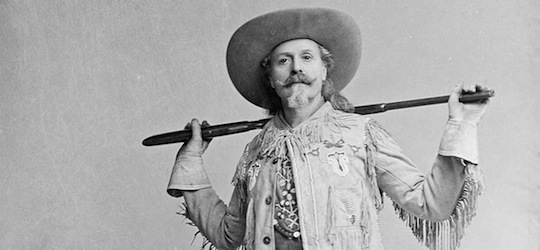2:30-4:00 PM Session 4: Childhood, Girlhood and Performing Identity
Jamie Horrocks, Chair
Julia Bricklin, Lillian Frances Smith: Adolescence, Gender, and Performing Identity in Buffalo Bill’s Wild West
In her late 20s, sharpshooter Lillian Smith started performing as a Native American “princess” called “Wenona.” This transformation presented a juxtaposition between youth and ethnicity. But with Cody’s program in 1886 through 1888, it was the sharpshooter’s youth and gender that presented both opportunities and limitations for the teen. Smith’s acceptance into the ranks of Buffalo Bill’s Wild West presented some extraordinary challenges to a pubescent girl, none of which had anything to do with her shooting prowess.
Julia Bricklin is an independent historian and an editor at the journal California History. Her book, America’s Best Female Sharpshooter: The Rise and Fall of Lillian Frances Smith, was published in April by University of Oklahoma Press.
Monica Rico, Annie Oakley: Performing the “New Girl”
One of keys to the success of Annie Oakley as a performer was her ability to represent a new gender ideal of youth and femininity. Though Oakley was a married woman in her twenties, her image evoked the healthy, innocent “new girl” who emerged in British popular culture the late nineteenth-century. Performing girlishness enabled Oakley to avoid simultaneously the suspicions of immorality associated with most women in the entertainment industry and the criticism for unfeminine behavior that her shooting skills might otherwise have attracted.
Monica Rico is Associate Professor of History at Lawrence University in Appleton, Wisconsin, where she has taught since 2001. Her research interests include environmental history, gender history, and the American West. Her book, Nature’s Noblemen: Transatlantic Masculinities and the Nineteenth-century American West, was published in 2013 by Yale University Press. She is currently working on a book-length project about artist Charles Willson Peale and his family.
Martin Woodside, Considering the Frontiers of Childhood
From his early appearances in frontier dime novels to his final days as a performer in wild west shows, William “Buffalo Bill” Cody appealed to a significant audience of children. Despite this, scant attention has been paid to the relationship between the iconic figure of Buffalo Bill and changing ideas of American childhood. This paper takes stock of this relationship, examining Cody’s significant impact on American children and childhood in the late 19th and early 20th centuries.
Martin Woodside earned his Ph.D. in Childhood Studies from Rutgers University-Camden. Martin’s current book project examines how discourses of boyhood and frontier mythology shaped each other and broader ideas of American identity in the second half of the 19th century and beyond. Material from this manuscript has been published in a number of journals, including Boyhood Studies and Journal of the History of Childhood and Youth.
